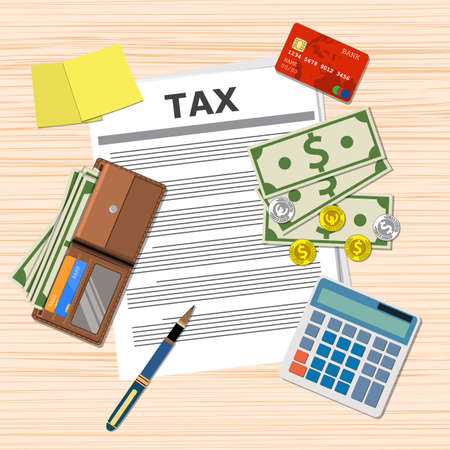Understanding Your Tax Code
In the UK, your tax code is a crucial set of numbers and letters that tells your employer how much Income Tax to deduct from your wages or salary before you get paid. It’s not just a random collection of characters—it’s determined by HM Revenue & Customs (HMRC) based on your personal circumstances, such as your tax-free Personal Allowance, any work benefits, and whether you have more than one job or pension. The most common tax code is 1257L, which for the current tax year means you can earn £12,570 before paying tax. However, if you have adjustments—like unpaid taxes from previous years, company car benefits, or other income—your code might look different. The specific structure of your tax code directly impacts how much money lands in your bank account each payday. If there’s an error in your tax code, it could mean you’re paying too much or too little tax, affecting your monthly budgeting and possibly leading to a surprise bill or refund down the line. That’s why understanding what your tax code means and checking it regularly on your payslip is vital for keeping control over your take-home pay.
2. Recent Changes to Tax Codes
Tax codes in the UK are updated regularly to reflect changes in government policy, inflation, and personal circumstances. Keeping up with these updates is crucial, as even a minor alteration can impact your take-home pay noticeably. In the 2024/25 tax year, several important adjustments have been made that employees and pensioners should be aware of.
Key Updates for 2024/25
The most notable recent change is the continued freeze on the Personal Allowance threshold at £12,570. This means you can earn up to this amount before paying income tax, but with wages rising due to inflation, more people may find themselves in higher tax bands without any actual increase in their spending power. The standard tax code remains “1257L” for most individuals with one job or pension, reflecting the Personal Allowance.
| Tax Band | Income Range (2024/25) | Tax Rate |
|---|---|---|
| Personal Allowance | Up to £12,570 | 0% |
| Basic Rate | £12,571 – £50,270 | 20% |
| Higher Rate | £50,271 – £125,140 | 40% |
| Additional Rate | Over £125,140 | 45% |
Common Triggers for Tax Code Changes
Your tax code might change throughout the year due to various factors:
- Starting or leaving a job: Each employment triggers a reassessment of your tax code.
- Receiving company benefits: Benefits like a company car or private health insurance can alter your allowance and thus your code.
- Pension income: Drawing from multiple pensions or starting a new one often prompts an update.
- Claiming work expenses: Deductions for professional expenses or charitable donations might adjust your total taxable income.
- Error corrections: HMRC may issue a revised code if previous calculations were incorrect or if you report a change in circumstances.
The Importance of Monitoring Changes
If your tax code is updated without clear explanation or you notice unexpected changes in your net pay, it’s wise to review your latest PAYE coding notice (P2) and compare it against HMRC guidance. Staying vigilant will help you address errors quickly and avoid under- or overpaying tax.

3. How Tax Code Changes Affect Take-Home Pay
Understanding how tax code changes impact your take-home pay is essential for anyone working in the UK. When HMRC updates your tax code, it directly influences how much income tax is deducted from your monthly earnings. Most people see these adjustments reflected on their payslips, often alongside other deductions such as National Insurance, student loan repayments, or pension contributions.
Essentially, your tax code tells your employer how much of your salary should be taxed before you receive it. For example, if you are assigned a higher personal allowance via an updated code, you may notice an increase in your net pay because less tax is withheld each month. Conversely, if your tax code indicates you owe more—perhaps due to additional benefits or underpayments—your take-home pay will decrease accordingly.
It’s important to keep an eye on regular payslip deductions. Alongside income tax, typical deductions include National Insurance contributions and any workplace pension schemes. If your tax code changes and you’re unsure why your monthly earnings have shifted, it’s wise to compare recent payslips to spot any differences in these line items. Understanding this breakdown ensures you aren’t caught off guard by unexpected reductions and helps you quickly identify if something isn’t right with your deductions or tax status.
4. Spotting Errors in Your Tax Code
Getting your tax code right is essential, as any errors can directly affect your take-home pay. Even a small mistake could mean you’re paying too much or too little tax throughout the year. In this section, we’ll walk through some of the most common warning signs that your tax code might be incorrect and explain how these errors typically arise.
Common Signs Your Tax Code May Be Wrong
| Warning Sign | Description |
|---|---|
| Unexpected change in take-home pay | If your pay suddenly drops or increases without explanation, it’s wise to check your tax code. |
| Unusual letters from HMRC | Receiving a notice about underpaid or overpaid tax may signal an issue with your code. |
| Code doesn’t match your circumstances | If you’ve changed jobs, started claiming benefits, or stopped working but your code hasn’t changed, it could be wrong. |
| Multiple jobs or pensions | If you have more than one income source and only one is using a personal allowance, the other could be taxed incorrectly. |
How Do Tax Code Errors Happen?
Mistakes in your tax code can come about for several reasons:
- You started a new job and your new employer didn’t get all the correct information.
- Your employer or pension provider submitted incorrect details to HMRC.
- You’ve claimed expenses or benefits (like company car or private medical insurance) that weren’t updated on your record.
- You receive taxable state benefits but haven’t told HMRC about changes in circumstances.
Practical Example: Wrong Tax Code Consequences
| Scenario | What Could Happen |
|---|---|
| Your tax code is 1257L when it should be BR (Basic Rate) | You may not pay enough tax on a second job, leading to a bill at year-end. |
| Your tax code includes outdated work expenses | You get a higher take-home pay now but face an unexpected tax adjustment later. |
Key Takeaway
If anything seems off with your payslip or you get a letter from HMRC that doesn’t make sense, don’t ignore it. Spotting errors early can save you from larger issues down the line, including owing money back to HMRC or missing out on cash that’s rightfully yours.
5. Steps to Take If You Think Your Tax Code Is Incorrect
If you suspect your tax code is wrong, acting swiftly can help prevent financial headaches down the line. An incorrect tax code could mean you’re paying too much or too little tax – both situations best avoided. Here’s a straightforward approach for UK employees to check and correct their tax code with HMRC.
Check Your Tax Code Details
Start by examining your payslip or P45/P60 for your current tax code. Compare this with the official guidance on the Gov.uk website. Common causes of errors include changes in employment, receiving benefits, or multiple jobs. Make sure your personal circumstances (such as marriage, benefits, or company car) are accurately reflected in your code.
Gather Relevant Documents
Before contacting HMRC, have all pertinent details to hand: National Insurance number, recent payslips, and any correspondence regarding your tax code. This will help HMRC verify your identity and investigate more efficiently.
Contact HMRC Directly
If you believe there’s an error, reach out to HMRC as soon as possible. You can call them via the Income Tax Helpline or use their online services to update your employment details or report a suspected mistake. Clearly explain why you think your tax code is wrong and provide supporting evidence if available.
Monitor Updates and Corrections
After reporting the issue, keep an eye on your next payslip and any official letters from HMRC. They should send you a new coding notice if changes are made. If you’re owed a refund due to overpayment, it will usually be paid automatically through your payroll; underpayments may be collected in future pay periods.
Stay Proactive
Finally, review your tax code annually—especially after life changes like starting a new job or moving house. Being proactive helps ensure you’re paying the correct amount of tax and protects your take-home pay from unexpected adjustments later on.
6. Useful Resources for UK Taxpayers
If you are dealing with a tax code change or believe your tax code might be incorrect, having access to the right resources is essential. Here are some official links, helplines, and guidance to help UK taxpayers resolve tax code queries and stay informed:
Official HMRC Links
- Check your Income Tax for the current year: GOV.UK: Check your Income Tax
- Understanding your tax code: GOV.UK: Tax codes
- Personal Tax Account: Sign in or set up your personal tax account
Contacting HMRC
- Income Tax Helpline: 0300 200 3300 (Monday to Friday, 8am to 6pm)
- If you use textphone: 0300 200 3319
- You can also use the HMRC contact page for webchat and other ways to get in touch.
Guidance and Advice
- CAB (Citizens Advice Bureau): Offers independent advice on tax issues – visit Citizens Advice
- LITRG (Low Incomes Tax Reform Group): Provides straightforward guides at LITRG.org.uk
Tips for Staying Informed
- Regularly check your payslips and P60s for any unexpected changes in your tax code.
- Update HMRC promptly if your circumstances change (such as changing jobs, starting a second job, or receiving benefits).
- Sign up for email alerts from GOV.UK to stay updated on any changes affecting income tax or PAYE regulations.
Summary
Navigating tax code changes can feel daunting, but these official resources will help you check details, resolve mistakes, and keep on top of any updates affecting your take-home pay. Always use trusted sources and don’t hesitate to seek help if something doesn’t look right on your payslip.


